by Eric Forthun
I had the chance to sit down with writer-director Will Eubank, whose upcoming film The Signal premiered at the Sundance Film Festival and opens theatrically this week. The film’s plot centers on a road trip where a hacker, Nic, and his two friends are drawn to an isolated area by a computer genius that leads them down a path akin to a waking nightmare.
I talk to Will about his love for science fiction, his cinematic influences like Stanley Kubrick and David Lynch, and his next film and future plans.
Eric: This is your second feature after Love. Along with The Signal, both are science fiction. Why do you enjoy working in the genre so much?
 Will: A lot of the next stuff I’m working on isn’t science fiction, but one of the bigger ones I want to do is science fiction, my be-all end-all movie. I won’t make it for a long time. I think science fiction is really fun, especially when you don’t have much money to explore big thematic elements and can show them in a humanistic way. A lot of people get outside of themselves a little bit, and use the stage of something bigger to come full circle to something they can relate to. I’ve always found science fiction fascinating and enjoyed science fiction that isn’t necessarily genre-based; something like Solaris (the 1972 Russian film by Andrei Tarkovsky), where it’s a movie about love and things that are close to your heart. But it puts them on the wildest stage, and because of science fiction gets the freedom to explore that in a really unique way.
Will: A lot of the next stuff I’m working on isn’t science fiction, but one of the bigger ones I want to do is science fiction, my be-all end-all movie. I won’t make it for a long time. I think science fiction is really fun, especially when you don’t have much money to explore big thematic elements and can show them in a humanistic way. A lot of people get outside of themselves a little bit, and use the stage of something bigger to come full circle to something they can relate to. I’ve always found science fiction fascinating and enjoyed science fiction that isn’t necessarily genre-based; something like Solaris (the 1972 Russian film by Andrei Tarkovsky), where it’s a movie about love and things that are close to your heart. But it puts them on the wildest stage, and because of science fiction gets the freedom to explore that in a really unique way.
E: So do you see the benefits of making a low-budget science fiction film, lying within the fact that you want to emphasize characters because you don’t have a huge budget to use on visual effects?
W: Yeah, that sounds weird because a lot of people associate science fiction with needing big things, but I think that’s cool with where we are in filmmaking right now. We can all get the tools to nod toward something, and people’s imaginations…people often sell people’s imaginations short. As long as they are led to a place and fill in the gaps with their imagination, usually that’s a little more powerful than revealing too much. In a way, you can tell a really simple science fiction story using the power of somebody’s imagination and a few nuggets leading somebody to that, getting to the core of your story. Films like Another Earth have done that really well, filling in the gaps while exploring something very human.
E: How was it working with Laurence Fishburne, an accomplished and established actor, along with Brenton 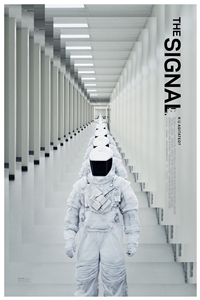 Thwaites and Olivia Cooke, who are both up-and-coming actors?
Thwaites and Olivia Cooke, who are both up-and-coming actors?
W: It was a cool contrast. All of the younger actors we had: Bo, Nat, Brenton, Olivia…all are very talented and great human beings and super passionate. We’re all younger and coming up at the same time, so we’re eager to make stuff happen. And when we got Laurence, he showed up with the same gusto, and that made me feel good because a legend like Laurence still loves what he does. He’s been doing this all these years and he still loves it! He loves telling the story and character, so it was satisfying to know that you can keep that passion no matter how big you are or how much you’ve done.
E: One of the central elements I noticed in the film’s set-up is the way a foreign object communicates technologically with the protagonist and leads him to a mentally unstable state. The main characters, as hackers, face a threat that can disrupt their technology and lead to their collapse. Was there a message surrounding technology and the way it can impact and threaten our personal lives in a way we didn’t intend?
W: There are different levels of what I was trying to explore. A basic way to explain what I was thinking is the weird way that technology and computers work. They act as a metaphor for film because there’s all this stuff on the surface and you can take it away on surface level if you want. But if you know how the core works and how the guts and programming work, much like a hacker does, then suddenly there’s an entire other world open for you. That’s scary to a lot of people, and scary to think that if all of the people who made computers just disappeared one day, we would pretty much go back to the Stone Age. It’s wild to me how computers are a language but they are built to be used by people who don’t know how to speak that language. There’s an interesting power to that that I think is represented in the film to a certain degree. At the start of the film, it’s face value but by the end, there’s something else going on with that.
It’s something I’ve always been personally into. My cousin goes to MIT, he just got his doctorate, and his girlfriend goes there too. I used to go to DEF CON when I was younger and enter into war drive competitions, but I was never the guy who knew how to do it all. I was just trying to do research and get it right. I’ve never been a hacker myself.
E: One thing I noticed is that the film is stunning visually. Once they enter the lab, the film uses white as the main color and there’s also an emphasis on primary colors, like blue and red. What was the impact of color, or lack thereof ,on the story?
W: I like negative framing a lot, through color or negative space on screen. It’s really fun to draw attention to certain things by having a lack of color, and it means that anything that now has color can have purpose. There are intentional colors represented that, if you were to trace them throughout the film, all start and end and point to certain traits. As humans, we often try to define certain colors and that’s a mystery to me. Like, why a color would represent this, or why are we afraid of the dark and light makes us less afraid. I’ve always found that interesting and I have my certain theories for why, so I wanted to explore those.
E: I also noticed that you used a lot of long corridors and especially focused on the center framing of characters that Kubrick employed. I read that he was one of your influences, as was David Lynch. For Kubrick, 2001 is an obvious influence, but which of Lynch’s works have influenced you?
W: Believe it or not, Twin Peaks is one. Brian Berdan, my editor, edited a lot of that, and he was an assistant editor on Blue Velvet. He’s naturally very Lynchian, way, way more than me, so we have to scale that back sometimes. Obviously Eraserhead and Twin Peaks are films that have affected me; I really hadn’t liked Eraserhead when I watched it, and I still don’t know if I like it, but I can’t stop thinking about it. And I don’t know why. That has always affected me. It led me to a different place in cinema. It stayed with me, whether I liked it or not. I’ll think, “That was a really unique experience.” There are characters in my film that are pulled from the Lynchian world.
E: Off the topic of the film, I’m curious: what are some of your favorite films?
W: My favorite film in the world is Casablanca, second favorite film is Chinatown, third favorite film is Dumb and Dumber, fourth favorite film isUncle Buck…no, I’m just kidding. (laughs) I’m actually a big fan of Dumb and Dumber and John Hughes, I love Uncle Buck and Planes, Trains, and Automobiles. I love Home Alone. I like films about characters, whether or not those are old-fashioned characters that represent a different time…I remember when I realized Chinatown wasn’t a period piece. Or when I realized it was a period piece. When I was watchingChinatown as a little kid, it was actually filmed back then! And it took me a while to wrap my head around that. Even Faye Dunaway, I thought she was that old, I guess; I thought she was a real old Hollywood dame. I guess she was one of the last true Hollywood dames. But yeah, I remember being blown away thinking, “Jack Nicholson really can’t be that old! He’s still alive!” I found that so unique and interesting. I’m from L.A. so I romanticize that film.
E: You mention Dumb and Dumber. Lin Shaye was in that, and she pops up a little bit here. She’s been in Insidious and other recent films, so what was the influence for casting her and creating that religious zealot of a character?
W: She’s awesome. So sweet, so lovely. Because of Insidious and having the same producer on this one, he made the connection. We showed her the role, the small role, and she was so eager to do it and found so much that when I explained to her how her character works and where she’s from, she just found that touching and did it to the max. We had a press day the other day in L.A. and she was talking about her character and getting teary-eyed, so it’s wonderful how much she invests in the roles that she plays. She’s the real deal.
E: Are there any actors that you are dying to work with in Hollywood?
W: There are a lot of great actors that would be exciting to work with. I love Ralph Fiennes, obviously I love Daniel Day-Lewis…I’m just gonna say all of the best actors right now. (laughs) I really like what Tom Hardy is currently doing. He interests me because he looks so gigantic and powerful and strong, but he’s really not that big of a dude, so I find that interesting. I’m drawn to male actors because I’m prone to thinking in a male perspective when I’m writing a movie just because that’s me, that’s what I know. There are a lot of talented actresses. I love Natalie Portman, I think that what Jennifer Lawrence is doing right now is just out of control. She’s a powerful young woman who’s super amazing. There are people all over the board, you never know! If I get that opportunity, I’m not afraid of anything.
E: You mentioned earlier that you had a film you want to make later in your career, an opus of sorts. I wanted to know what you meant by that?
W: I stumbled onto an idea and I know that it’s in my pocket. It’s one where I know I can pull the covers up at night and go to sleep knowing that I have one of the best ideas ever. It’s really cool. I know it’s never been done before, where I know it’ll blow people’s minds, and the twist at the end is so heavy. It’s also beautiful and will really be a beautiful film. I was so scared when I heard of Interstellar that I thought he [Christopher Nolan] stumbled upon the idea that I had. Fortunately, it wasn’t even in the same realm, so thank gosh! It’s my big one, so I won’t make it until I make two more films because I need to learn more and get to a place where I feel really comfortable making this one. I also want a certain amount of creative control over it and I have to earn it.
E: Do you know what your next project will be?
W: I don’t, but I’m close on some things. I just talked with one of my writers that I’m working with, and it’s a movie centering on a Scottish highlander. It’s not based on any real history, but it’s loosely based on the Norman invasion of England. The film isn’t set in England, though, kind of like how Game of Thrones isn’t really set anywhere. It’s a movie about fatherhood and wanting to leave behind the better parts of you with your children and not the bad parts. I don’t know if that one will be next, since I’m working on another project with the same writers asThe Signal. That one is about a mining incident in South Africa in one of the world’s deepest mines. It’s a pretty exciting film, so we’ll see what comes out of that. It’s a wild ride trying to get a film made, so you never know until you actually know what’s coming next.
The Signal opens Friday, June 13th in select theaters.
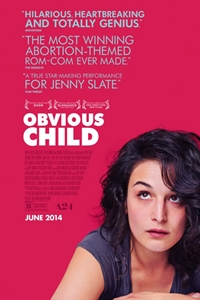 Obvious Child
Obvious Child
 22 Jump Street
22 Jump Street
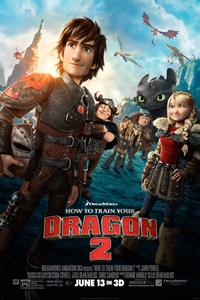
 The Signal
The Signal
 Alone Yet Not Alone stars Kelly Greyson (Return To The Hiding Place) with Jenn Gotzon (God’s Country, Frost Nixon) and actor/musical artist Clay Walker (Clay Walker: Jesse James).
Alone Yet Not Alone stars Kelly Greyson (Return To The Hiding Place) with Jenn Gotzon (God’s Country, Frost Nixon) and actor/musical artist Clay Walker (Clay Walker: Jesse James).
 Will: A lot of the next stuff I’m working on isn’t science fiction, but one of the bigger ones I want to do is science fiction, my be-all end-all movie. I won’t make it for a long time. I think science fiction is really fun, especially when you don’t have much money to explore big thematic elements and can show them in a humanistic way. A lot of people get outside of themselves a little bit, and use the stage of something bigger to come full circle to something they can relate to. I’ve always found science fiction fascinating and enjoyed science fiction that isn’t necessarily genre-based; something like Solaris (the 1972 Russian film by Andrei Tarkovsky), where it’s a movie about love and things that are close to your heart. But it puts them on the wildest stage, and because of science fiction gets the freedom to explore that in a really unique way.
Will: A lot of the next stuff I’m working on isn’t science fiction, but one of the bigger ones I want to do is science fiction, my be-all end-all movie. I won’t make it for a long time. I think science fiction is really fun, especially when you don’t have much money to explore big thematic elements and can show them in a humanistic way. A lot of people get outside of themselves a little bit, and use the stage of something bigger to come full circle to something they can relate to. I’ve always found science fiction fascinating and enjoyed science fiction that isn’t necessarily genre-based; something like Solaris (the 1972 Russian film by Andrei Tarkovsky), where it’s a movie about love and things that are close to your heart. But it puts them on the wildest stage, and because of science fiction gets the freedom to explore that in a really unique way.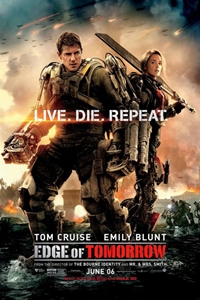 Edge of Tomorrow
Edge of Tomorrow
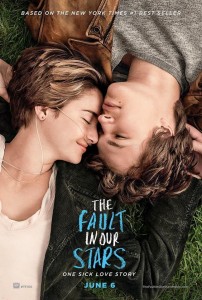 The Fault in Our Stars
The Fault in Our Stars
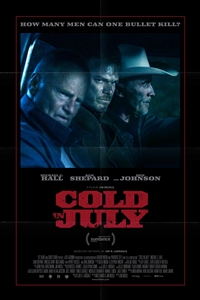 Cold in July
Cold in July Maleficent
Maleficent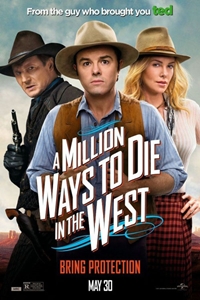
 X-Men: Days of Future Past
X-Men: Days of Future Past
 The Love Punch
The Love Punch
 Blended
Blended







